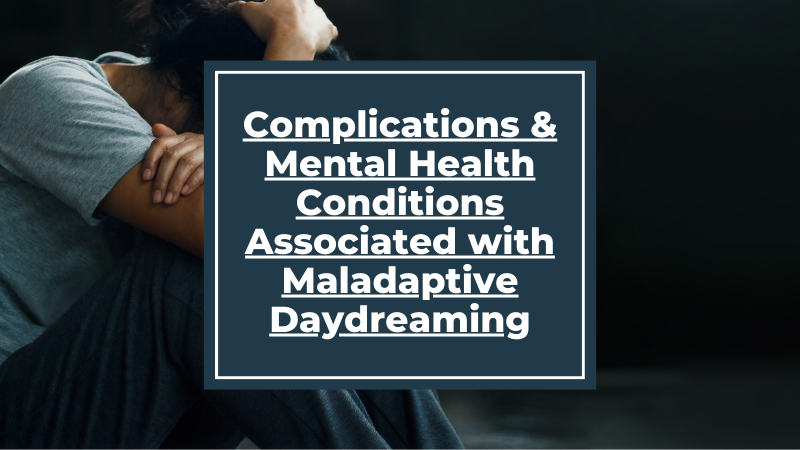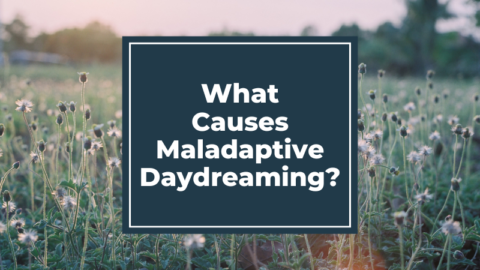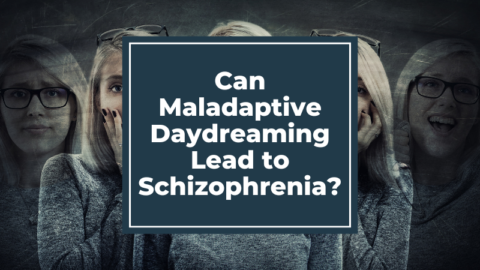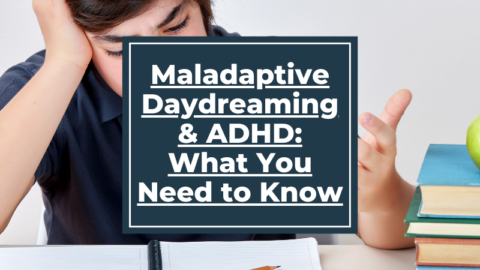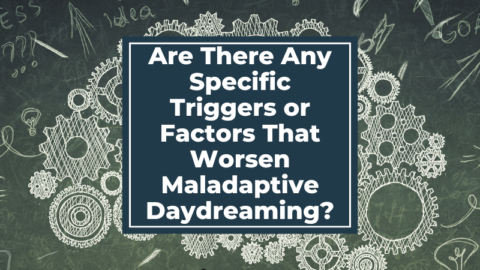Maladaptive daydreaming, a phenomenon characterized by excessive and immersive daydreaming, can present various challenges that extend beyond the realm of daydreaming itself. For individuals who experience maladaptive daydreaming, additional complications and associated mental health conditions can often impact their well-being and daily lives. Understanding these complexities is crucial for fostering empathy, seeking appropriate support, and developing effective coping strategies.
This blog delves into the intricate web of complications and mental health conditions related to maladaptive daydreaming. We explore how maladaptive daydreaming can intersect with various aspects of mental health, relationships, personal development, and overall functioning. By shedding light on these interconnected factors, we hope to provide a comprehensive understanding of the impact of maladaptive daydreaming and foster a sense of validation for those who experience it.
Remember, you are not alone in this experience. By gaining a deeper understanding of the potential complications and associated mental health conditions related to maladaptive daydreaming, we can foster a supportive community and work towards greater awareness and acceptance. As always, don’t hesitate to connect with others on our Maladaptive Daydreaming Forum. Together, let’s navigate the complexities and find strength in our shared experiences.
Stay tuned for our upcoming articles, where we will explore these topics in more detail and provide practical tips for managing and addressing the challenges associated with maladaptive daydreaming.
Complications or Associated Mental Health Conditions Related to Maladaptive Daydreaming
There can be complications and associated mental health conditions related to maladaptive daydreaming. While maladaptive daydreaming itself is not officially recognized as a mental health disorder, it can have significant impacts on an individual’s well-being and daily functioning, leading to various challenges. Some of the complications and associated conditions include:
- Impaired Daily Functioning: Excessive daydreaming can interfere with daily responsibilities, such as work, school, relationships, and self-care. It can lead to difficulties in completing tasks, meeting deadlines, and maintaining focus on real-life activities.
- Emotional Distress: Maladaptive daydreaming can be accompanied by emotional distress, including feelings of guilt, shame, frustration, or dissatisfaction with one’s real-life circumstances. The discrepancy between daydreams and reality can contribute to a sense of disconnection, loneliness, or low self-esteem.
- Impaired Social Relationships: Spending excessive time daydreaming can result in social withdrawal or isolation, as individuals may prioritize their internal fantasy world over real-life interactions. This can strain relationships with family, friends, and romantic partners. Loved ones may feel neglected or disconnected when individuals spend excessive time and emotional energy in their daydreaming world, leading to relationship conflicts, emotional distance, and a decreased sense of connection with others.
- Reduced Productivity and Achievement: Excessive daydreaming can diminish productivity and hinder goal attainment, as it can consume a significant amount of time and mental energy. This can impact academic or professional performance and limit opportunities for personal growth.
- Co-Occurring Mental Health Conditions: Maladaptive daydreaming may be associated with other mental health conditions, such as depression, anxiety, attention-deficit/hyperactivity disorder (ADHD), obsessive-compulsive disorder (OCD), or other dissociative or trauma-related disorders. These conditions may either contribute to the development of maladaptive daydreaming or arise as a result of its impact on an individual’s life.
- Sleep Disturbances: Excessive daydreaming can disrupt sleep patterns, leading to difficulties falling asleep or staying asleep. Individuals may find themselves staying up late engaging in daydreaming episodes, which can result in sleep deprivation and affect overall well-being.
- Difficulty with Time Management: Excessive daydreaming can make it challenging to manage time effectively. Individuals may struggle with prioritizing tasks, meeting deadlines, or adhering to schedules due to the amount of time spent engaged in daydreaming activities.
- Impaired Self-Identity: For some individuals, maladaptive daydreaming may become deeply intertwined with their sense of self-identity. It can blur the boundaries between the real world and the fantasy world, making it challenging to establish a clear understanding of personal values, goals, and aspirations.
- Impact on Mental Health Treatment: If maladaptive daydreaming co-occurs with other mental health conditions, it can complicate treatment approaches. The excessive daydreaming may need to be addressed alongside other symptoms or disorders to achieve comprehensive and effective treatment outcomes.
- Emotional Regulation Difficulties: Some individuals may rely on maladaptive daydreaming as a coping mechanism to escape or regulate their emotions. They may use daydreaming as a way to avoid or suppress unpleasant emotions or to experience more positive emotions. This reliance on daydreaming as a coping strategy can impede the development of healthier emotional regulation skills.
- Impact on Mental Well-being: Maladaptive daydreaming can contribute to psychological distress, such as feelings of dissatisfaction, dissatisfaction with reality, or a sense of being disconnected from the present moment. It can also exacerbate symptoms of anxiety, depression, or other mental health conditions.
- Impaired Attention and Concentration: Excessive daydreaming can make it difficult to sustain attention and focus on real-life tasks or conversations. This can lead to decreased productivity, difficulties in learning or studying, and challenges in professional or academic settings.
- Interference with Goal Achievement: Spending excessive time in daydreams may hinder progress toward personal goals or aspirations. The discrepancy between daydreams and real-life accomplishments can create frustration and dissatisfaction, making it harder to attain desired outcomes.
- Distorted Perception of Reality: Excessive daydreaming can blur the line between fantasy and reality, leading to difficulties in distinguishing between the two. This can impact one’s ability to accurately perceive and respond to real-life situations.
- Negative Impact on Self-Esteem: For some individuals, maladaptive daydreaming may result in feelings of inadequacy or self-criticism. The idealized versions of themselves or their lives portrayed in their daydreams may create unrealistic expectations, which can lead to dissatisfaction and a negative self-perception.
- Social Isolation: Excessive daydreaming can contribute to social isolation and difficulties in forming or maintaining relationships. Individuals may prefer spending time alone, immersed in their daydreams, rather than engaging in social interactions, which can lead to feelings of loneliness or detachment.
- Decreased Motivation: Spending excessive time daydreaming can diminish motivation for real-life activities, as the daydreams may provide a sense of fulfillment or excitement that is lacking in everyday experiences. This can lead to a lack of drive and reduced engagement in pursuing personal goals.
- Interference with Real-Life Experiences: Excessive daydreaming can lead to missed opportunities for real-life experiences, such as social events, career advancements, or personal growth. It can create a sense of detachment from the present moment and limit engagement with the external world.
- Impact on Physical Health: While maladaptive daydreaming primarily affects one’s mental and emotional well-being, it can indirectly impact physical health. Excessive daydreaming may lead to a sedentary lifestyle, disrupted sleep patterns, or neglect of self-care activities, which can contribute to physical health issues.
- Negative Self-Comparison: Immersive daydreams often involve idealized scenarios or versions of oneself. This can result in frequent comparisons between one’s daydream self and their real-life self, leading to feelings of dissatisfaction, low self-esteem, or a distorted perception of personal worth.
- Escalation of Daydreaming Behavior: In some cases, maladaptive daydreaming can escalate over time, leading to increased frequency, duration, or intensity of daydreaming episodes. This can further exacerbate the negative consequences and challenges associated with the condition.
- Impact on Academic or Professional Performance: Maladaptive daydreaming can have a negative impact on academic or professional performance. Individuals may struggle to concentrate or stay focused during lectures, meetings, or work assignments, leading to decreased productivity and potential consequences in educational or professional settings.
- Financial Implications: Excessive daydreaming can have financial implications, particularly if it leads to a lack of attention or motivation in areas such as budgeting, financial planning, or pursuing career opportunities. This can result in missed financial goals, debt accumulation, or limited career advancement.
- Exacerbation of Underlying Issues: Maladaptive daydreaming can exacerbate underlying mental health conditions, such as depression, anxiety, or trauma-related disorders. The immersive nature of daydreaming may provide temporary relief or distraction from these conditions but can ultimately hinder long-term healing or recovery.
- Impact on Self-Development: Spending excessive time daydreaming can limit opportunities for personal growth and self-development. Individuals may neglect to engage in new experiences, learning opportunities, or personal hobbies, which can hinder personal fulfillment and hinder overall development.
It’s important to note that individual experiences may vary, and not everyone who engages in excessive daydreaming will experience these complications or associated conditions. If you or someone you know is experiencing significant distress or impairment due to maladaptive daydreaming, it is advisable to seek professional help from mental health professionals who can provide a comprehensive evaluation and develop an appropriate treatment plan.
By acknowledging the complexities and associated mental health conditions related to maladaptive daydreaming, we can foster empathy, support, and effective strategies for individuals navigating this phenomenon. Through education, awareness, and a sense of community, we can empower individuals to better understand and manage the complications that may arise alongside maladaptive daydreaming.
Have more questions about Maladaptive Daydreaming? Join our forum to connect with more Maladaptive Daydreamers.

